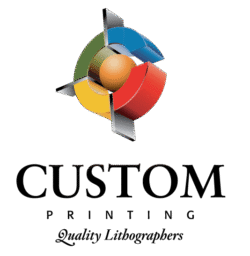If you’re thinking of having posters printed, choosing the size of your print is probably one of the biggest decisions you’ll make is choosing the size of your prints. While it is possible to print your posters in just about any size imaginable, there might be a few reasons why you would want to consider some of the more standard sizes.
The most common reasons to stick to common sizes for posters are to make framing and display more uniform. Most commercial frames come in standard sizes, and producing prints in these sizes makes it much more likely that customers will have frames on hand to display the poster.
Art Posters
Many artists assume they should choose a size for poster prints most similar to the original piece. While this can be a good place to start, there is a strong commercial reason to create prints in “standard” sizes. Specifically, 11 x 17, 24 x 36, and 27 x 48 posters are ideal for art.
Many consumers of art in this medium intend to frame the poster, but they rarely have the budget or knowledge to have a poster custom framed. This means that most of these posters will need to fit in the standard sizes of frames available in most big box art supply stores. While a few other sizes may be available, these three sizes are the easiest to find ready-made frames.
Furthermore, these sizes tend to be the sizes that will look best with other pieces that these customers may already have framed on their walls. This is particularly true of the 24 x 36 size; because it is such a common size for many posters, it is common for customers to want a uniform look of several different pieces of the same size hanging in a line along a single wall or in a single room.
Promotional Posters
Posters meant to advertise a product or service must be as large as possible but still look like a natural part of the background in many commercial establishments. In the case of posters advertising an upcoming show at a theater or other event, it’s a good idea to check with the venue asking for promotional materials and confirm the sizes they need for their frames or display cases. While many venues will request the 24 x 36 or 27 x 48 size, confirming sizing before printing is always a good idea.
For promotional posters for merchandise or commercial items, you will still want to check with the establishments (such as retail stores) that will display the signage. While these might not frame the posters, they may have limited wall space to display. By keeping your poster a standard size, it is much more likely to fit better with other posters of a similar size. If you don’t have any restrictions from a venue regarding the size of your posters, you will likely want to opt for the largest size possible.
Handbills
Handbills or flyers typically come in 5 x 8, 8 1/2 x 11, and 11 x 17. These sizes can also be called half sheet, letter, and legal size. Because these paper sizes are so common, it is easy to find folders, notebooks, and boxes to store and organize the handouts. Furthermore, these paper sizes are typically the most economical size to print since a lot of paper comes pre-cut to these sizes, making it unnecessary to cut down paper for these sizes of handbills.
Because these are such common sizes, it is also an ideal paper size for customers. This size of paper stacks neatly with other papers. It fits into most standard folders and notebooks, making it easy for potential customers to file and store flyers for future reference. In fact, some clients choose to design their handouts so that a portion of the page can be torn off and used as a coupon, admission ticket, or raffle entry form while the remaining portion of the page becomes the next standard size down.
For example, a common technique is creating a grocery flyer on 8.5 x 11 paper but including tear-off coupons on the bottom portion. The entire flyer fits in a notebook, or the coupons can be torn off and easily stuffed into a folder or billfold because the coupons are a standard 8 x 5 size.
Informational Signage
Informational signage, such as directional signage for conferences or a poster detailing the rules and regulations of a new play area, is very important to the safety and organization of any business or event. Using standard-size printing for these types of posters will help to ensure that the venue looks professional while also helping to ensure that the posters will fit correctly in the space provided.
Much like advertising, informational posters must often be placed in commercial venues with limited space for outside displays. In many cases, frames and display cases come in standard sizes, and having posters printed in the most common sizes will help to ensure that everything fits properly and looks neat at the venue. If there are no frames or displays available, standard-size posters will make it much easier and economical to properly display them if commercial frames need to be purchased.
If you’re thinking of having a poster printed, visit us at https://customprintinginc.com/. Custom Printing Inc. has years of experience printing everything from posters to packaging, and we would love to work with you on your design project.


